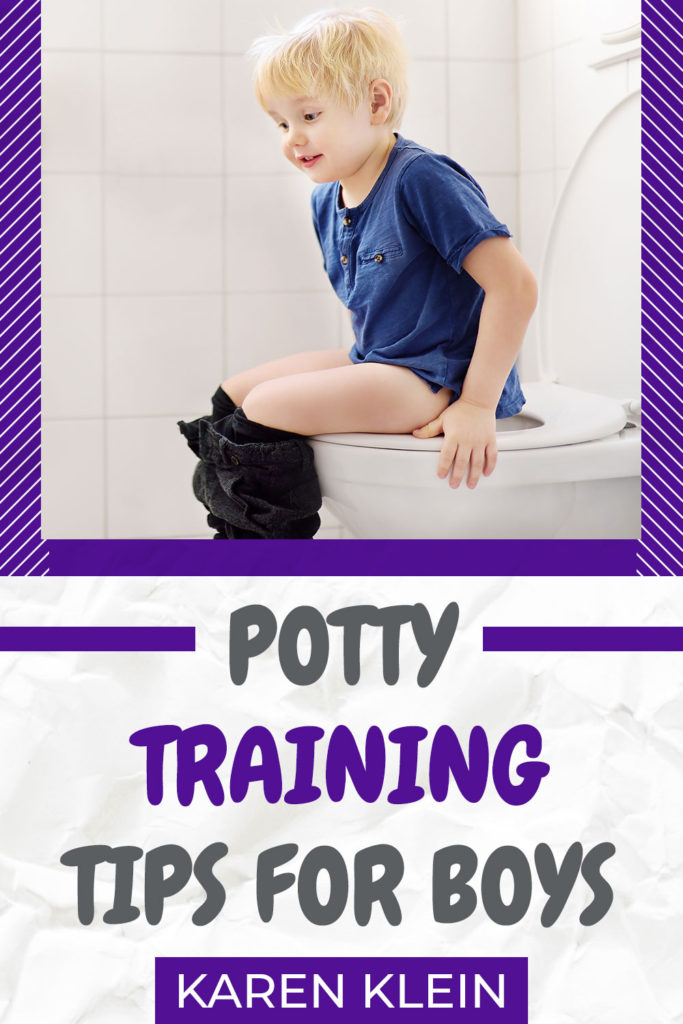
Before potty training I never knew there could be so much bonding on a toilet seat.
@confidentialmo1
Potty training revolves around teaching your child how to recognize their body signals. It is an important milestone in the development of a child. It is one of the first steps that children take on their route towards becoming self-sufficient.
Potty training is a challenge both for parents and children, because it occurs when the new physical abilities, vocabulary, and self-esteem are rapidly developing in children. All children will manage to acquire the necessary control eventually, but the difficulty involved is a major concern for parents.
Interesting Facts
- In the United States, the average age at which potty training begins has increased over the past four decades from earlier than 18 months of age to between 21 and 36 months of age.
- According to a 2001 study by Schum, on average baby boys in the United States give up diapers at 39 months and girls at 35 months.
- Most toddlers urinate four to eight times each day, usually about every two hours or so.
- Babies don’t have the “ability to hold urine and stool until they’re at least 12 to 18 months old.
- Most toddlers have one or two bowel movements each day, some have three, and others skip a day or two in between movements.
- Remaining bowel-movement free overnight is the earliest attained skill, occurring around 22 months of age in girls and 25 months in boys.
- A study showed 22% of all children still wet the bed at night at age 3, and 10% still wet the bed by age 7.
Why Is Proper Potty Training So Important?
Theories in psychology emphasize that toilet training plays a major role in the personality development of the child. This is when the child learns self-control and to control impulses.
- An early and harsh training such as forcing a child to hold or control their bowel movements can often result in a child that is obsessively tidy and punctual. Whereas, proper toilet training and using encouraging statements helps build the child’s self-esteem.
- A liberal toilet training with no appropriate guidance can make the child messy and disorganized.
Tips For Potty Training Boys
Potty training boys might be the more challenging of the two options. Boys have to learn a 2-step process. Boys and girls both learn to sit on the potty, but boys have to learn the additional skill of knowing when to stand and when to sit, and what to do when they need to do both.
So here are some potty training boys tips:
- Make sure your son is ready. Try not to rush the process and start potty training too early, before your little one is capable of achieving success.
- Get your child involved in choosing the potty. If possible, go shopping for the potty chair or potty seat together with your child. It will make him feel more included and more excited about using his brand-new potty.
- Purchase fun underwear for your boy as a sign of encouragement, for example underwear with a favorite cartoon character or superhero graphic.
- Once your little one starts potty training, implement a simple schedule. For example, you could encourage going on the potty after eating, after naptime, before bedtime, and after waking. This lets your child know that going potty is a routine thing and might help prevent some night-time accidents, too.
- Use a sticker chart to track (and reward) progress. Every time your son does a good job, let him place a sticker on the chart. He’ll feel great every time he gets a new sticker.
- Create a potty-training song. If your child seems nervous about using the potty, some musical encouragement could help him feel more relaxed and get into the groove.
- Tell him when he does a good job on the potty. Shower your boy with praise to keep his motivation high, and to reinforce that he’s doing a great job.
- Give your toddler a book or let them look at one of their favorite picture books to make time pass and encourage relaxation.
- Train by example. Take your child with you the next time you need to use the toilet. Dads might find it easier to teach little boys. Use his favorite teddy bear to act out how the teddy bear goes about using the toilet or potty.
- Give your boy some extra time. Sometimes boys need more time than girls to learn the difference between doing a number 1 and 2. It’s a good idea to start by teaching him how to pee while sitting down before teaching him to do it standing up.
- For your little one, passing a bowel movement might be frightening. His reluctance can lead to withholding, which can lead to constipation. Teach your toddler (perhaps by watching a cartoon on the subject or by reading him a children’s book on potty training) that pooping is a natural process and that there’s nothing to be afraid of.
- If you’re using your toilet to train, don’t flush right after your child has used the potty. The flushing sound can be especially scary in the initial stages of potty training. Introduce the concept of flushing gradually.
- Don’t expect miracles in a few days. Some parents swear by 3-day potty training, which is kind of like potty training boot camp where the training occurs on a strictly timed schedule.
- Although potty training struggles can be frustrating at times, don’t punish mistakes. Let him know that it’s OK and he can try again later. Added pressure will not help her learn any faster. Be patient. Try another technique. Give it time.
Benefits of potty training
- The sooner you begin potty training, the sooner you finish.
- Kids learn their natural signals faster.
- Children gain confidence that enriches other areas of development.
- Decreased risk of voiding disorders, wetting problems, and constipation.
- Cheaper (and much more environmentally friendly)! Especially if you use disposable diapers.
5 great products for potty training boys
For boys, shopping for the right potty seat is a bit trickier. Potty time can quickly become a huge mess if you don’t search for a potty with a splash guard. We’ve compiled a list of toys to help your toddler get the hang of potty training boys tips.
.
Playing with this toy involves squeezing and flushing motions that build the small muscles in your child’s hands. These motions help kids develop fine motor skills, which are necessary for their development as they learn to write, eat; tie their shoes, and more. Potty Duck’s suction cups can stick to the side of a sink or a bathtub for playtime. As your toddler helps the duck pee in the toilet, your child will learn how to use the toilet themselves.
Great stool for all your kid’s needs, use it for Potty training, brushing his teeth, or washing his hands. Anti-slip marks on the bottom and top of the stool will prevent the stool from slipping and your kid from falling
It can be used not only as a stand-alone bedpan but also as a little toilet seat cover in combination with most toilets. The potty seat adopts a three-point fixing structure with TPR rubber non-slip foot pads, and the legs can be securely locked by the groove to ensure the stability of the toilet seat, allowing your child to gain more confidence while using the toilet as a beginner. It is easy to carry around.
4 Non-slip strips on the bottom prevent slipping; Adjustable arms underneath that keep it from wiggling back and forth; Handles for kids to hold onto if they are worried about falling! The 3-level protection system makes kids feel safe and relaxed while sitting on the toilet.
Fitted with a funny aiming target in the form of a rotating windmill, it is sure to keep your cuties focused, entertained, and pee on the mark. Our kid’s urinal has a urine guard in the form of a tongue, which prevents spillage and splashing of urine. It’s also has a removable waste tank for easy no-touch cleaning and waste disposal.
In addition to those selected products, i highly recommend you to read about
“Products that help with potty training for 3 year old”
I hope you found this article interesting, and that it will help you with your next purchase!
You can SUBSCRIBE HERE to receive future posts to your mailbox and follow me on Pinterest.
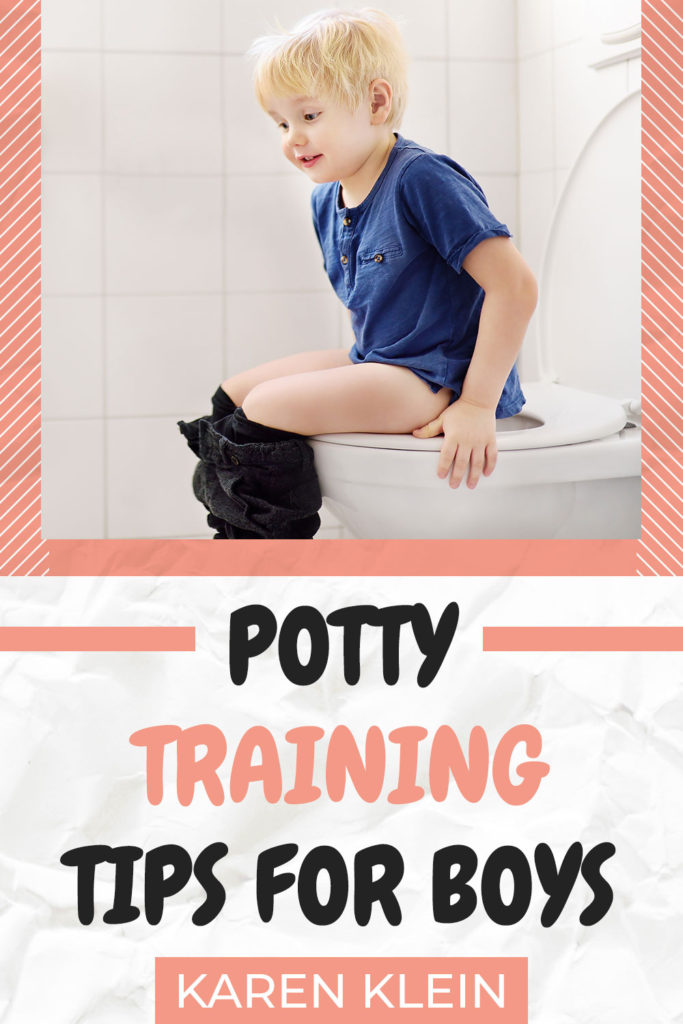
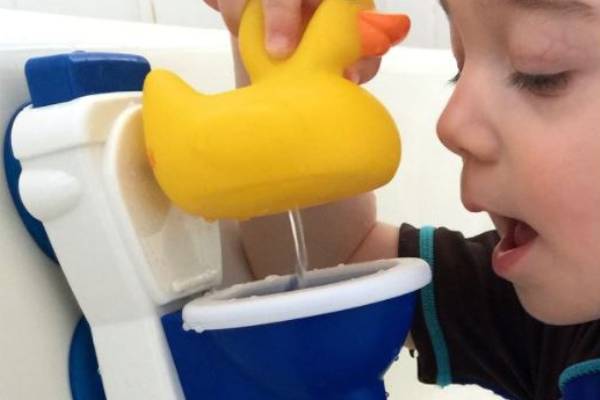
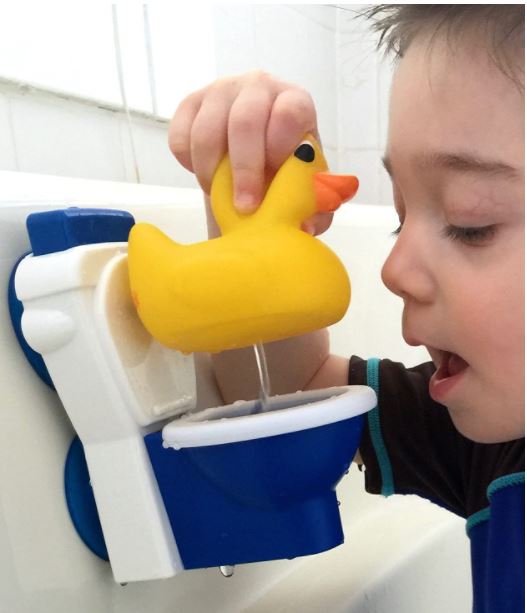

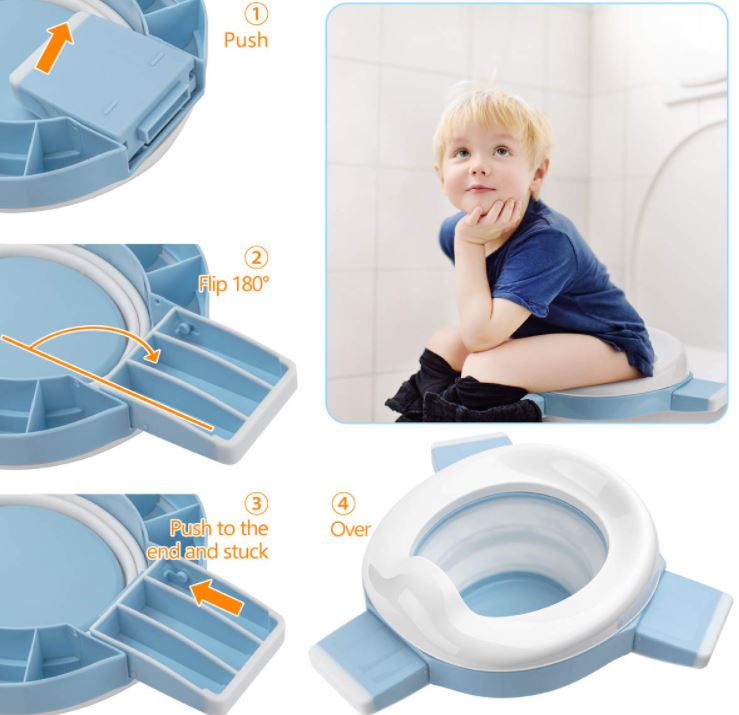
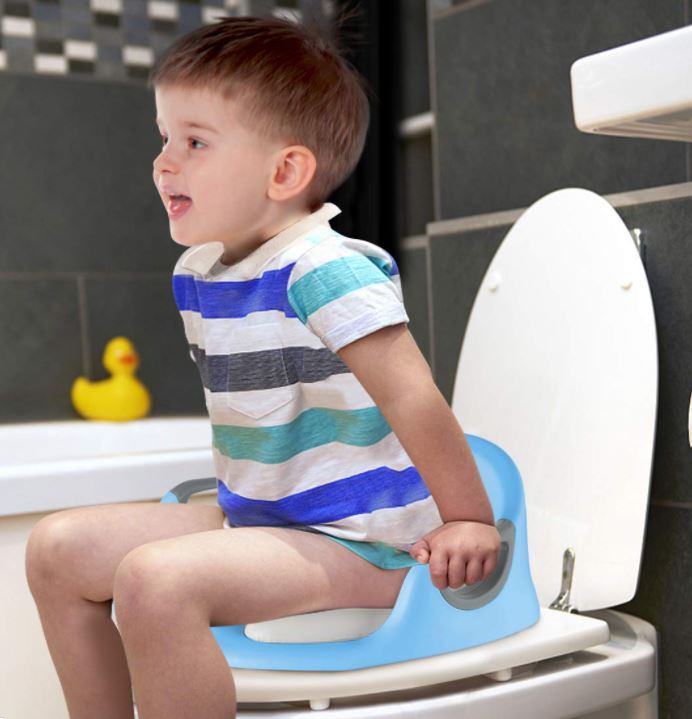




Thanks for your advice! The Blue Step Stool really helped my son a lot!